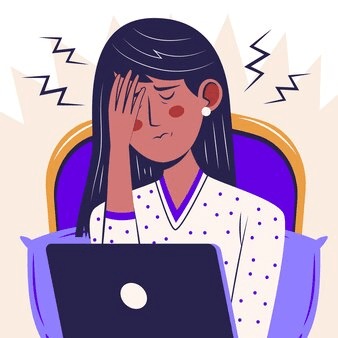Panic attacks at work can be overwhelming and disruptive, characterized by sudden episodes of intense fear and physical symptoms like rapid heartbeat, shortness of breath, and dizziness. These attacks may be triggered by stress, high-pressure tasks, or underlying anxiety disorders. It’s important to identify triggers and develop coping strategies, such as deep breathing exercises, mindfulness, and taking short breaks. Seeking support from a mental health professional can provide effective techniques and therapies to manage and reduce the frequency of panic attacks, helping maintain productivity and well-being at work.
Is it normal to have panic attacks at work?
Yes, it is relatively common to experience Panic attacks at work. High-stress environments, tight deadlines, and demanding tasks can contribute to feelings of overwhelming anxiety, leading to panic attacks. While they are distressing, having panic attacks at work does not mean you are incapable or weak. It is important to recognize the signs and seek appropriate support, such as talking to a supervisor, using relaxation techniques, or consulting a mental health professional. Addressing the issue can help manage and reduce the occurrence of panic attacks, improving overall work performance and well-being.
Dealing with Panic attacks at work?
If a colleague experiences Panic attacks at work, offer compassionate support by listening attentively and validating their feelings. Recommend utilizing “Workplace counselling” services, which provide specialized support for managing anxiety.
- Recognize Symptoms: Understand the physical and emotional signs of a panic attack, such as rapid heartbeat, sweating, dizziness, and intense fear.
- Deep Breathing: Practice deep, slow breathing exercises to calm your nervous system and reduce panic symptoms.
- Grounding Techniques: Use grounding exercises, like focusing on physical sensations or objects around you, to stay present and reduce anxiety.
- Take Short Breaks: Step away from your workspace for a few minutes to reset and regain composure.
- Mindfulness and Meditation: Incorporate mindfulness practices and meditation into your daily routine to build resilience against stress.
- Identify Triggers: Keep a journal to track and identify specific situations or factors that trigger your panic attacks.
- Develop a Plan: Create a plan for managing panic attacks, including specific steps to take and whom to contact for support.
- Communicate with Your Supervisor: Inform your supervisor about your condition if you feel comfortable, and discuss potential accommodations or adjustments to your work environment.
- Use Stress-Relief Tools: Keep stress-relief tools at your desk, such as stress balls, fidget spinners, or calming essential oils.
- Stay Hydrated and Eat Well: Maintain a balanced diet and stay hydrated, as physical health can impact mental well-being.
- Regular Exercise: Engage in regular physical activity to reduce overall anxiety and improve your mood.
- Seek Professional Help: Consult a mental health professional for therapy or counseling to develop coping strategies and address underlying anxiety disorders.
- Make sensible goals: ––To prevent feeling overburdened, divide work into smaller, more doable chunks and establish reasonable objectives.
- Connect with Supportive Colleagues: Build a network of supportive colleagues who can offer assistance and understanding during stressful times.
- Utilize Employee Assistance Programs (EAPs): Take advantage of workplace EAPs that offer counseling and support services for employees dealing with mental health issues.
Managing Panic attacks at work starts with creating a supportive environment. Organize “Best EAP Provider In India” (EAP) counseling to ensure employees feel comfortable seeking help.
What are common triggers for Panic attacks at work?
Common triggers for Panic attacks at work can include high-pressure deadlines, public speaking or presentations, interpersonal conflicts, or overwhelming workloads.
- High Workload: Overwhelming tasks and tight deadlines can create significant stress, leading to panic attacks.
- Job Insecurity: Fear of losing one’s job or concerns about job performance can trigger anxiety and panic.
- Conflict with Colleagues: Tensions or disagreements with coworkers can escalate stress levels, causing panic.
- Public Speaking: Presenting in meetings or speaking in front of groups can be a major anxiety trigger for some individuals.
- Lack of Control: Feeling powerless over work situations or decisions can lead to heightened anxiety and panic.
- Performance Pressure: High expectations from supervisors or self-imposed pressure to excel can contribute to panic attacks.
- Unclear Expectations: Uncertainty about job roles, responsibilities, or performance standards can cause stress and panic.
- Micromanagement: Overbearing supervision and lack of autonomy can create a stressful work environment, leading to panic.
- Poor Work-Life Balance: Inability to balance work demands with personal life can result in burnout and panic attacks.
- Physical Environment: Noisy, crowded, or uncomfortable workspaces can trigger anxiety and panic.
- Lack of Support: Insufficient support from supervisors or colleagues can leave individuals feeling isolated and anxious.
- Changes at Work: Organizational changes, such as restructuring or new management, can create uncertainty and stress.
- Personal Issues: Personal problems, such as financial stress or family issues, can spill over into the workplace, triggering panic.
- Health Concerns: Worries about one’s health or chronic medical conditions can contribute to anxiety and panic attacks.
- Past Trauma: Previous traumatic experiences, particularly those related to work, can be triggered by similar situations or stressors in the workplace.
Conclusion
Recognizing these common triggers can help individuals and employers develop strategies to reduce stress and prevent panic attacks in the workplace.



More Stories
Dental Implant Pricing: Expert Guide & Insights
Your Path to Parenthood: Affordable & Transparent Surrogacy
Multivitamins for Women’s Stress Relief